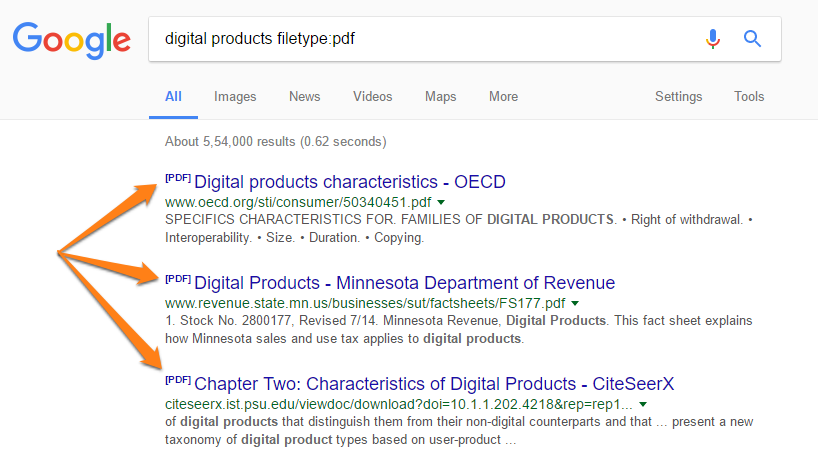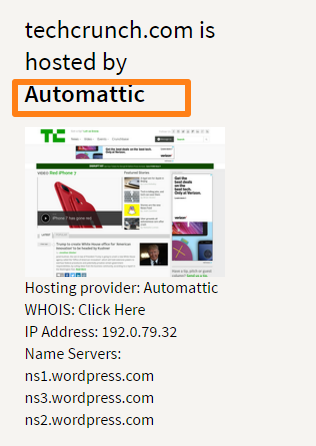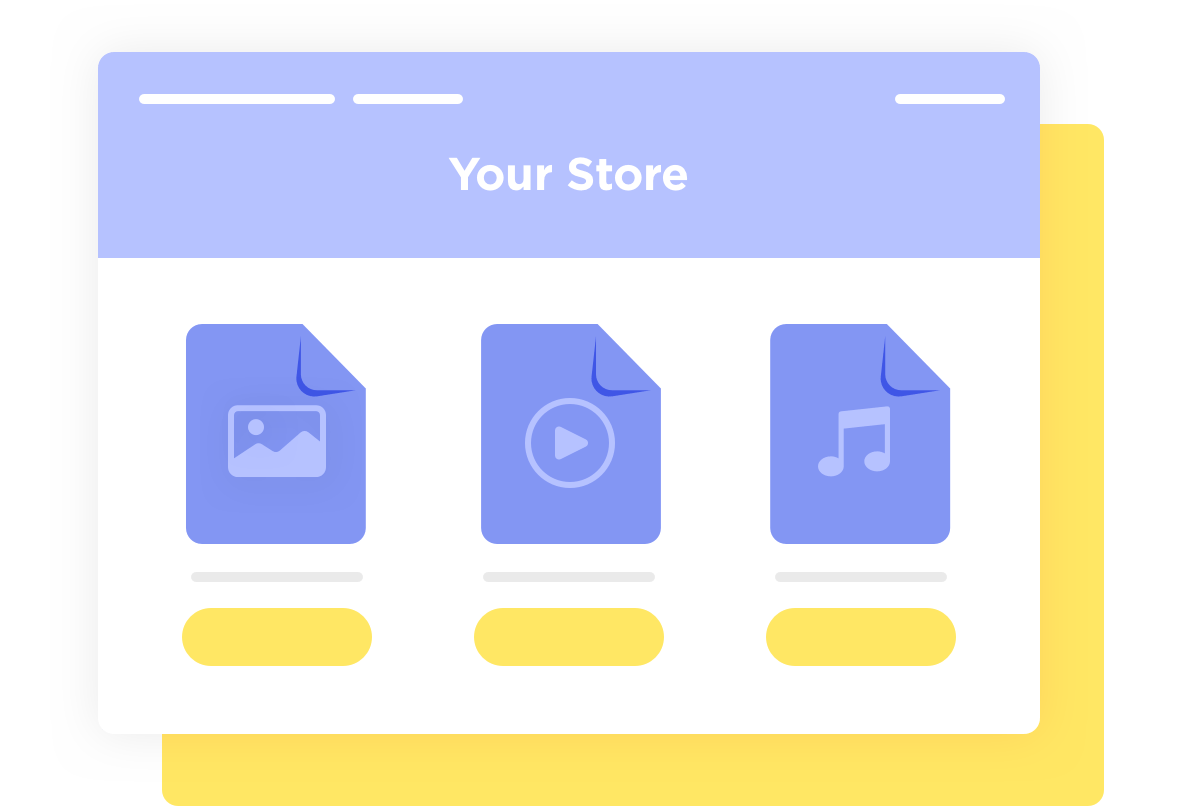When you’re selling digital products, you benefit from the absence of inventory and shipping, but you get piracy as a constant threat instead. It is remarkably easy for someone to steal your intellectual property — music, designs, eBooks, software — and distribute it under their own name.
The numbers associated with piracy are staggering. Microsoft estimates that piracy costs the software industry Another estimate pegs the loss between within the US alone.
Regardless of the numbers, one thing is clear: theft can be a serious problem when you’re selling digital products.
Fortunately, there are some ways you can make theft much, much harder. We’ll show you how to protect your digital products in this article.
Rethink Digital Protection
Before we dive into the details of digital protection, it’s important that you view it with the right frame of mind.
Simply put, there is no such thing as 100% foolproof protection when it comes to digital goods. Thousands of business around the world have been trying to solve this problem, including massive software companies like Microsoft, and they haven’t fully succeeded.
The reality of the internet is that if there is sufficient demand for a product, someone somewhere will figure out a way to access it for free.
This doesn’t mean that you shouldn’t invest in piracy protection at all. Instead, it means that you need to view digital products through a different lens.
Keep two things in mind:
- The harder a product is to steal, the less motivated people will be to steal it.
- If it is substantially easier to buy the product than to steal it, more people will be willing to pay.
The second point is particularly important and is the reason behind the success of sites like Spotify. By making it much easier to stream music legally, Spotify removed the motivation to pirate music. Little wonder that .
So whatever protection tactics you choose, make sure that your product is a) harder to steal, and b) easier to buy.
This might mean changing your distribution tactic. For instance, instead of creating software and selling it via downloads, try turning it into a subscription model where customers pay a fixed fee to access the product each month (i.e. SaaS).
By making access easier, you will encourage more legitimate buyers and discourage theft.
Tactics to Protect Digital Products
Not every tactic to protect digital products will work equally well. Below, we’ve shared a few tactics as well as their quality of protection offered, and what kind of product they work best for.
1. Copyright Your Product
Getting a copyright will not prevent theft, but it will make it easier to seek redressal in case someone steals your product. This essentially notes that you are the rightful owner of a specific piece of intellectual property (IP), and thus, can take someone to court for violating the copyright.
Since copyrighting is a legal matter that varies from country to country, we recommend that you consult a local lawyer who specializes in copyright law. ����&�Բ�����;��dz�’r�� in the US, you can consult the Office as well.
Do keep in mind the following points before you think of getting a copyright:
- Copyrights are not universal — a copyright in the US will not protect you from theft and distribution in China.
- Not every product can be copyrighted. In the US, for instance, titles, names, phrases, slogans, ideas, etc. cannot be placed under copyright. Literary works (including unique content), unique designs, software, etc. can be. Check your country’s laws before you proceed.
- Any unique you publish online is automatically placed under copyright as per the DMCA, even if it doesn’t have the copyright symbol (©).
Getting a copyright is not always necessary. In many cases, it might even be wasteful, especially if you’re producing a lot of unique IP rapidly. ����&�Բ�����;��dz�’r�� publishing online, you might be already protected under .
Nevertheless, explore this as an option if you’re spending a lot of resources to create unique IP.
Also listen to
2. Hide Your Product from Prying Eyes
Making the product hard to find for search engines and spies should be the first step in your digital protection plan. After all, if they can’t find it, they can’t easily steal it.
If you sell digital goods with ������, you don’t have to take the three steps below. Simply upload digital products to your store — ������ will generate links for download after each purchase and won’t pass them to search engines.
There are a lot of ways you can hide your
A. Place your product inside a Zip file
����&�Բ�����;��dz�’r�� selling documents (such as an eBook) in a PDF file, search engines can easily read the file and make it visible in search results. Anyone can then use the “filetype” operator in Google to find these documents on your site.

An easy way to workaround this problem is to place the PDF in an archive (.zip or .rar file). Search engines cannot read these files, so your data can remain safe.
B. Hide open directories on your site
����&�Բ�����;��dz�’r�� storing your files in a separate directory on your site (such as “yoursite.com/downloads”), people can view its contents by directly accessing it in their browsers.
An easy way to hide open directories is to create a .htaccess file in your site’s root folder. In the .htaccess file, add the following:
Options — Indexes
Now whenever someone tries to access open directories on your site, they’ll see a “403 Forbidden” error like this:

C. Stop search engines from indexing your pages
Search engines send out millions of pieces of code called “search engine spiders” or “bots” to index billions of pages every day, a process called “crawling”.
These spiders will crawl every single page on your site unless specifically told not to. If you have a page that lists all your protected files, the spider might crawl it as well and make it visible in search results.
You can stop spiders from crawling specific pages on your site by creating a “Robots.txt” file. This is a simple text document that regulates bot behavior. You have to place it in the root directory of your site.
To block access to a folder, add the following code to the Robots.txt file:
Disallow:
Disallow:
This code basically instructs all bots (“user agents”) to not index your folder.
3. Place Downloads Behind a Login
One of the easiest ways to deter unauthorized access to your products is to place the product behind a login.
This simply means that instead of a download link, the customer gets a username and password
While this won’t stop a paying customer from copying and distributing the files, it does offer a few benefits:
- It makes it harder for someone to access the files, which can deter pirates.
- It makes it easy to track downloads via usage logs and figure out if someone is stealing content.
- You can disable access to suspicious customers remotely.
- It prevents search engines from indexing the content.
There are plenty of ways to place files behind a login. Check out , , , , (free) and .
4. Limit Access to Downloads
How do you prevent a paying customer from sharing his download link with others?
Simple: by limiting access to the downloads.
This is a tried and tested technique to limit downloads to legitimate customers. Basically, this involves placing a time or
����&�Բ�����;��dz�’r�� using ������ to sell your digital goods, you can easily limit access by going to Settings → Cart page →
Here, you can limit downloads by:
- Total number of downloads
Time-bound validity of the download link.
For instance, you can keep the download limit to “3”. This means that the download link you send to a customer upon payment will expire after 3 downloads.
You can also set the download link to expire after a fixed amount of time (say, 72 hours). If the customer tries to access the download after this period, they’ll get an error message.
This tactic works because it makes sharing a download link unfeasible. Customers who can only download a product 3 times won’t feel motivated enough to share this link with others.
You can further increase protection by changing the names of files and folders periodically. Once you’ve changed the names, people who already have access to the download link won’t be able to find the files (while legit customers can still access it).
����&�Բ�����;��dz�’r�� taking this route, choose file names that are hard to guess, like “y12xq.pdf” instead of “file.pdf”.
5. Create Product Licenses
Another tactic to prevent theft is to create unique licenses for each product copy. To access the product, the customer has to enter the license key.
This is how most software companies protect their products. If you’ve ever entered a long alphanumeric key before installing a software, you’re already familiar with this concept.
Some of the benefits of using this tactic are:
- Strong protection: License keys can be notoriously hard to crack. The quality of protection offered by this technique can be classified as “strong”.
- Remote locking: If someone asks for a refund or engages in suspicious activity, you can disable the license. This would not only prevent future downloads but also invalidate any existing copy of the product.
- Prevents redistribution: Pirates can’t rename the file or copy its contents since each copy is tied to its own unique key.
- Prevent reprinting: In the case of eBooks, you can use your licensing software to disable print functionality or to make sure that the license gets printed along with the rest of the book. This can prevent people from printing copies and redistributing them physically.
- Download monitoring: You can check whether someone has already downloaded and accessed the file using the license key. This can prevent people from claiming that they haven’t received the file.
Creating product licenses can make accessing the file harder for customers, but it also offers significantly advanced protection. This is a tradeoff you’ll have to consider making if you want better protection.
There are plenty of ways to create product licenses. ����&�Բ�����;��dz�’r�� using a tool like InfusionSoft to create and deliver products in the sales funnel, you can .
For other solutions, consider (for code), (for most files), Book Guard Pro (for PDFs), and (any file).
6. Monitor the Web for Stolen Products
Last, but not the least, make sure that you keep a close watch on the web for any stolen versions of your product. This way, you’ll at least know if someone is distributing your products legally.
The easiest way to do this is to create a Google Alert for your product name. Just enter the name of your product and change the settings to give you an update anytime someone mentions your product.

Keep in mind that your product won’t always be redistributed under its original name. Make sure to add possible variations such as alternative product names, your website name, your own name, etc. while monitoring.
����&�Բ�����;��dz�’r�� publishing content online, you can also use to detect plagiarism and send you automatic alerts for content theft.
What to Do in Case of Theft
Even if you take all the preventive measures above, you might still see your content stolen and redistributed online.
If this happens, there are a few things you can do to protect yourself:
1. Contact the offending site
Before you take the legal route, it’s always a good idea to contact the site hosting your stolen contact and ask them to take it down. You’ll find that most sites will happily comply.
Start by finding the site’s contact information. Most websites will have a contact form. If you can’t find this information, get contact data from the site’s WHOIS records. Go to a WHOIS tool like Who.is or Whois.sc, then enter the site’s domain name.
You should see the domain registrant’s email and phone number, like this (provided the registration isn’t set to “private”):

Once you find the email address, send an email requesting removal.
In case you can’t find the contact information, or if the site refuses to comply, send a removal request to the website’s host. Go to and enter the site’s domain name into the search box.
In the right pane, you will see the name of the host.

Contact the host and let them know about the stolen content as well as the proof showing that you are the owner. Most hosts will happily remove the content if you can offer sufficient proof.
2. Submit a DMCA Complaint
As we mentioned earlier, any content you create and publish online is automatically protected under DMCA. In the case of theft, you can submit a DMCA complaint and get a site owner to remove the offending complaint.
You will, of course, have to first prove that you are the actual owner/creator of the content. Creation logs, publishing dates, etc. come into the picture here.
You can submit a DMCA complaint through DMCA.com. . Keep in mind that this is a paid service.
For a free alternative, use to create a new “notice”, then follow the instructions
3. Take the Legal Route
If the above two tactics fail, you will have to take the legal route, such as sending a Cease & Desist notice through your lawyer or even filing a case of copyright infringement.
Since the legal option can be lengthy and expensive, it should be your last resort.
We highly recommend consulting a lawyer if you are considering using this option.
Learn more: 25 Places to Find
Conclusion
Content theft and piracy can not only hurt your revenues but also your reputation. Anyone selling digital products should have the necessary measures in place to prevent theft.
What
In case someone does manage to steal your content, contact the site’s host to remove the content. If that doesn’t work, submit a DMCA takedown request.
What digital downloads do you sell (or plan to) in your store? Do you have any other digital product ideas?
��
- How to Sell Digital Downloads on My Website
- 18 Digital Product Ideas For Almost Every Small Business
- How to Protect Your Digital Goods From Piracy
- Sell Downloadable Files Up to 25GB with ������
- 10 Amazing ������ Stores that Sell Digital Products
- How You Can Create a Digital Product with Zero Skills and Make Money by Selling it Online
- The Best Places Where You Can Sell Digital Products







